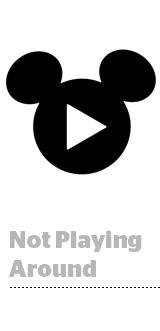
Disney missed its earnings expectations Tuesday by a smidgen, causing its stock to dip about 1% in after-hours trading.
But you can’t keep a good mouse down.
Analysts expected $1.95 per share on revenue of $15.4 billion in the fiscal third quarter. Instead, Disney posted $1.87 per share on $15.2 billion in revenue – not to mention a 2% decline in ad sales revenue at ESPN due to fewer NBA finals games.
Despite the miss, investors were most interested in Disneyflix. On the company’s earnings call, Disney CEO Bob Iger fielded questions almost exclusively focused on its plans for subscription streaming glory.
For example, why is Disney planning three separate apps for its content – one for sports, one for Disney and one for Hulu – when there’s already so much fragmentation in the market?
Don’t worry about that, Iger said. Consumers don’t want everything in one “gigantic aggregated play.” Each service has its own flavor that will attract a different audience demographic, he said. If a consumer wants all three, there’s an opportunity down the road to offer packages for a different price.
Next question: Does Disney really have a chance of competing with Netflix? Sure, Disney has access to a library of valuable content – Marvel, LucasFilm, Pixar, assets on the docket from the pending Fox acquisition, including FX and National Geographic – but Netflix offers way more choice.
To that, Iger threw a little shade in Netflix’s direction. Netflix has volume, he said, but Disney is in the “quality game.”
“I’m not in any way suggesting Netflix is not in the quality game, there’s a lot of quality content there, but they’re also in the high volume game, and we don’t really need to do that,” he said.
OK, but doesn’t Disney have a bunch of existing licensing deals that prevent it from including some of its best content in its D2C Disney offering?
Disney didn’t embark on its streaming dreams without considering that a number of its products are hampered by extant licensing arrangements with distributors, including Netflix.
What can you do? Disney plans to take advantage of whatever windows open down the road that enable it to reclaim that content for its own service. It’s also got a 2019 movie studio slate that is “unencumbered and clean” and includes foregone hits, including Frozen 2.
“We’ve always believed we have the brands and the content to be extremely competitive and thrive alongside Netflix and Amazon and anyone else in the market,” Iger said, noting that the addition of Fox content will just sweeten the deal for consumers.
But speaking of sweeting deals and distribution, Iger was mum on what happening with Fox and its Sky acquisition.
Despite missing Wall Street’s numbers, Disney posted $2.9 billion in studio entertainment revenue (up 20% YoY), $5.2 billion in parks and resorts-related revenue (up 6% YoY) and $6.25 billion in media and networks revenue (up 5% YoY). Consumer products revenue slipped 8% YoY to slightly more than $1 billion.
This post was syndicated from Ad Exchanger.


More Stories
Scroll Media boosts in-game advertising with new feature
Kiwi filmmaker spotlights media struggles at top global awards
T-Mobile Has Appointed Kristin Harrer As Senior Vice President and Chief Brand Officer